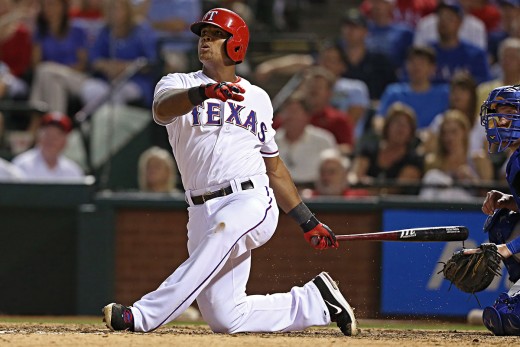(photo credit: m.mlb.com)
So many hitters focus on their hands, their hips, their posture, their stride. These are integral chains in the kinetic function of the swing. However, often these problems are not problems, rather they are symptoms of the problem.
When you have a cough, the cough is not the problem, it is a symptom of the problem. You have a virus or perhaps even allergies, and your body responds by producing mucus that drains into your throat. Gross.
A doctor knows he can help you manage the symptoms of the virus, but ultimately, you cannot get rid of a virus with cough syrup or throat lozenges. A doctor would tell you to eat well, exercise, and wash your hands frequently.
To best avoid viruses (or weak contact), you have to focus on the first step in the chain of events, your body's inability to fight the virus efficiently.
The same is true of hitting. We must attack the problem, which often requires understanding a body's ability to operate as efficiently as possible. That is, we want to maximize power (force and acceleration) translating into the ball. Sounds complicated.
You want complicated? Check out
this swing.
Fangraphs recently had an intriguing
article on Jason Howard's inefficiency. The article clearly showcases his weaknesses, and how they have actually shifted, though they are exacerbated.
Heyward
has attempted to make adjustments to his approaches and swing. It seems as though he is attempting to hit more pitches that are elevated in the zone (a positive concept), without creating a swing, and most importantly, a rhythm, that will allow for him to do so efficiently. The Fangraphs article presents
symptoms of the problem.
Regardless, Heyward has always had a
problem: he has poor rhythm at the plate. His pre-swing movements are short and quick, violent almost. His hands move quickly away from the pitcher and snap forward with average control. While I am not a fan of Heyward's swing path, he could immediately make himself a better hitter, with more consistent barrel contact, by
only changing this load rhythm and tempo.
(photo credit: chronicle.augusta.com)
RHYTHM
Rhythm: a strong, regular and repeated pattern of movement.
If you watch
highlights of Heyward hitting, he has problematic rhythm. His load and stride conclude at the same time. This is bad. When the front foot HEEL lands, a hitter must hit. For Heyward, his load rhythm is the first place the kinetic chain breaks down.
Great hitters finish the negative motion of their load (while continually moving, allowing the barrel to turn) prior to their stride foot HEEL hitting the ground.
Watch these dudes:
Josh Donaldson
Barry Bonds
Andrew McCutcheon
Miguel Cabrera
TEMPO
To have the ability to consistently square the ball up, we must have consistent, regular and repeated patterns of movement. Secondarily, we must have excellent tempo. Few hitters pay attention to their tempo.
Tempo is speed or pace and usually is related to music.The tempo of a hitter's load is the speed of movement between when hand or arm movements change direction. Many hitters have a circular load, while others bounce up and down. The speed with which those movements cycle is the tempo of the load. Within a swing, we want our tempo to be more Jack Johnson than AC/DC.
We can pick apart any hitter, including Jason Heyward, and find faults in their stance, grip, stride, slotting, barrel turn, hand path, etc., but first, we must evaluate the speed of their load.
Learn a consistent load rhythm and tempo, and you will be amazed at how many of the problems found in the kinetic chain of the swing stay in sync.
(photo credit: baseball-cards-and-collectibles.com)





